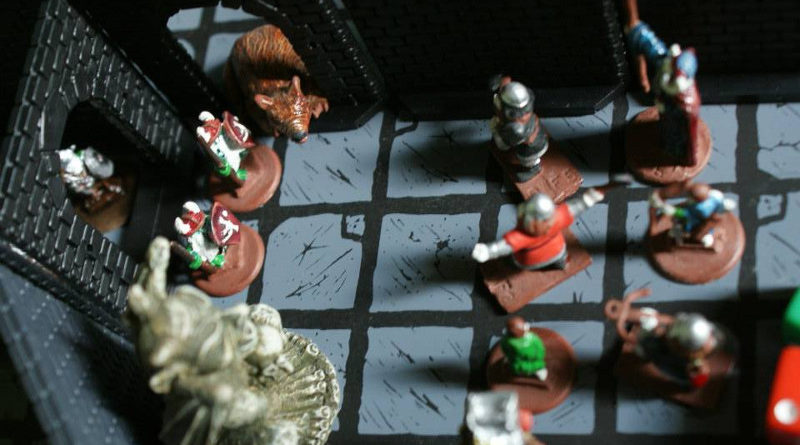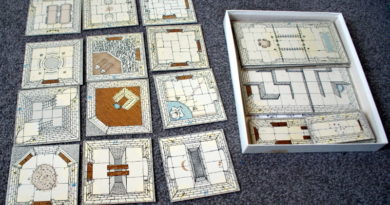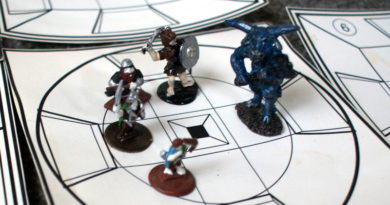Tile That Dungeon! – Part Two
By G. Bruce MacKenzie
What madness is this? Cardstock tiles? How are they even relevant in this era of on-line role playing and 3D printed modelling? Demonstrably, physical items such as Fantasy Paths with their illusion of forced perspective readily allow us to suspend our disbelief somewhat and immerse ourselves in an imaginative realm of fantasy adventure.
For those fortunate to meet and play in person among the merits of 2D artwork is its ease of transportation. Back in the day, the Fantasy Paths illustrated by Dennis McGlumphy came in a box which pretty much matched the size of the Basic boxed D&D set.
Today such 2D artwork is very portable and important in the world of on-line role playing.
For a moment I hope the reader will indulge this author in a slight departure from the main topic of interest as we take a look at a comparable 3D product from 1991, “DungeonWorksTM” from DungeonWorks in Ames Iowa. Like the Fantasy Paths, DungeonWorks took a similar approach in providing an in-the-box accessory. The box was square however so it didn’t match the D&D Basic Game box size. That wasn’t a deterrent and I purchased the set back in the day seeing potential in it.
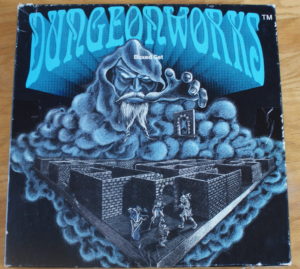
Inside the box is a printed tiled metal board, somewhat heavy and covered in red felt on the back. There are 25 plastic walls, 5 archways, each with magnetic strips glued to their bases. This allows these wall and arch sections to stick to the board and be re-arranged in any order which does mean that one can quickly replicate typical hand drawn dungeon maps which conform closely to a grid.
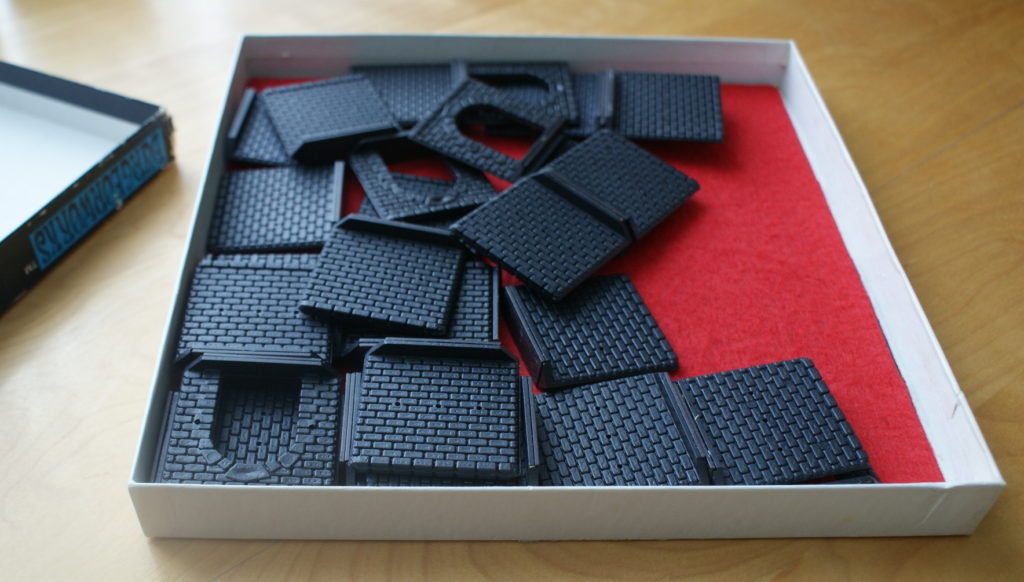
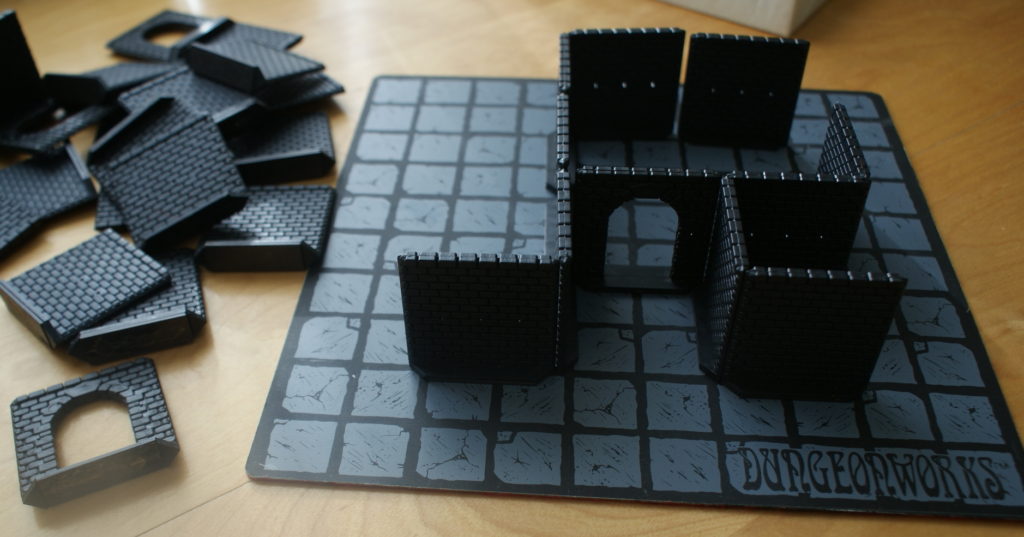
One could purchase accessories for the boxed set, doors and lintels, field walls, half walls, tables and benches, tapestries, torches, etc. I never saw any of these accessories at my local hobby shop but the wall sections do have holes in them which I am assuming are meant to allow the torches and tapestries to be attached. Unfortunately for whatever reason I never pursued the purchase of these accessory items further. The lack of doors in the Dungeon Works base set left me wishing they had been included.
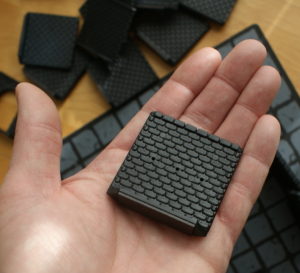
The wall and archway sections are two squares in width, which means once one factors in the typical 10 ft dungeon map square of the day into the mix the board’s tiles squares are obviously 5 ft. This however means that one soon uses up the board’s available real estate meaning that the largest space which can be rendered in whole is 50 x 50 ft. The board’s flagstone grid fits the purpose nicely of providing the necessary structure against which movement can be measured and regulated. I think its useful to contrast this approach with that of the Fantasy Paths in which not all of the floor tiles had an obviously defined grid. One has to weigh the need for regularity vs. illustrative potential and variety. There are no wooden floors to be found in DungeonWorks!
The Fantasy Paths also had the advantage of larger layouts. The confines of the DungeonWorks board means that all presentation has to be worked out in the space provided. In some ways I wish the box had contained a larger four piece folding board, similar to a boardgame, and doors as well as arches. Obviously therefore given the space limitation using more sets would be “better.”
Map tiles shouldn’t be too specific, but perhaps they shouldn’t be too bland either, at the very least any visual content has to be adaptable. In play the DungeonWorks set proves a useful and well made product. Some might think it vanilla perhaps but that works in the sets favour because it does not force a particular presentation upon the user. The imagination is not prompted as it is with the illustrative Fantasy Paths. The sections can be re-arranged to suit the circumstance. In practice, with a little accessorizing, the set is certainly fun to use. Per the illustration below the idea of the game is instantly conveyed in a meaningful way.
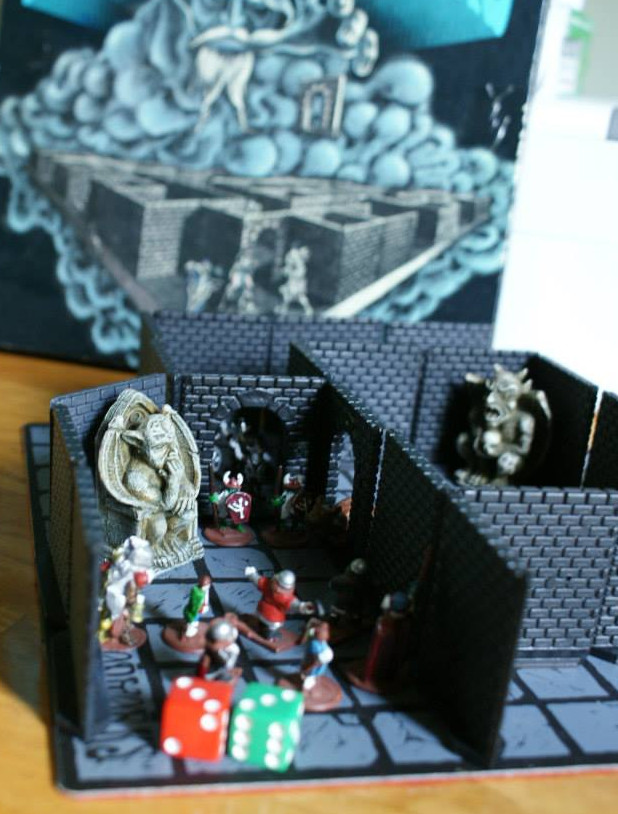
There are lessons which may be derived from comparing the approaches taken by the Fantasy Paths and DungeonWorks sets that are applicable to all map tiles in general. Each stands on its own merits. One of the limitations however of the Fantasy Paths is that any arrangement of the map tiles is easily disturbed during use by movement of miniatures, tossing of dice, table shaking, etc. The incorporation of magnetic or other mutually attractive materials in the construction of map tiles as used in DungeonWorks is undoubtedly successful in keeping things in place. The board may even be tilted for example without disturbing the layout of the walls. I have to note though that incorporating magnets into the bases of minis and accessories would secure them in place. In terms of fit and finish while well made the walls and arches do not lock together in a seamless way but this does not at all spoil the fun.
Well then, we have reached an obvious mile marker so I shall leave off here until the next article in the series…
